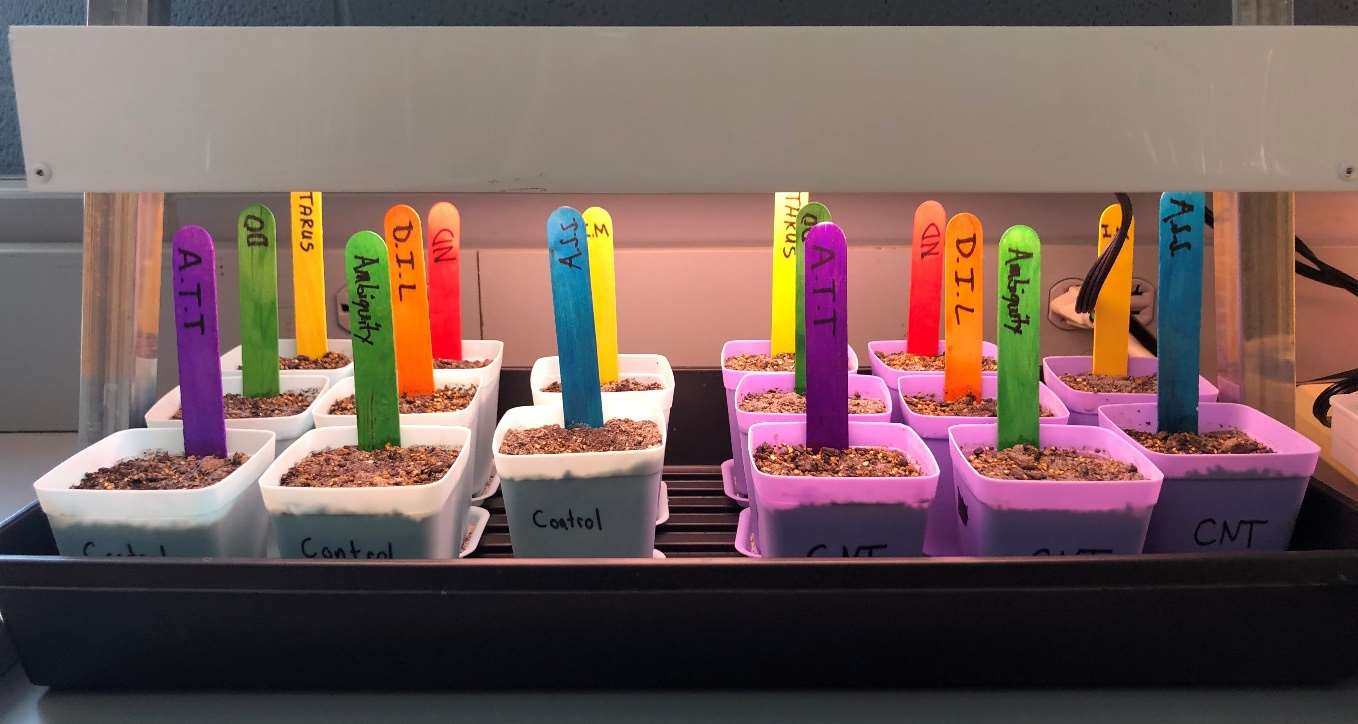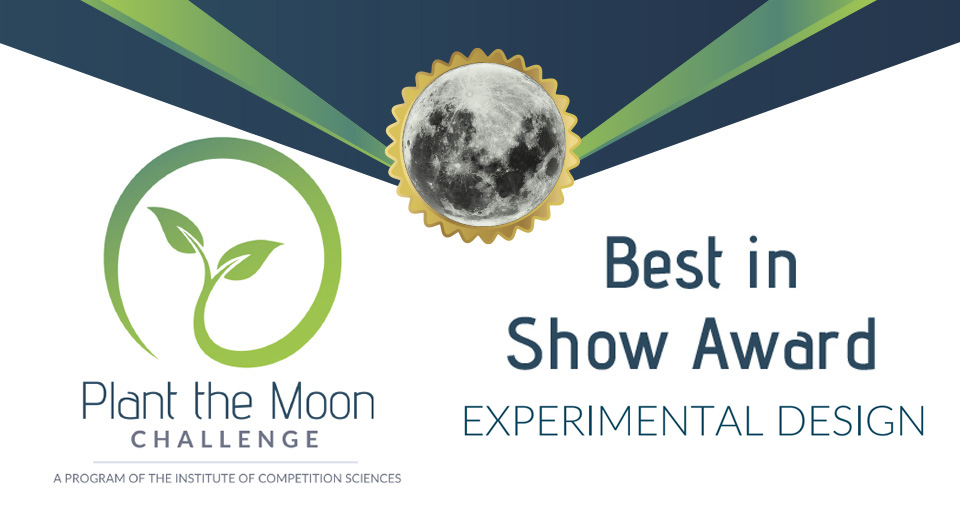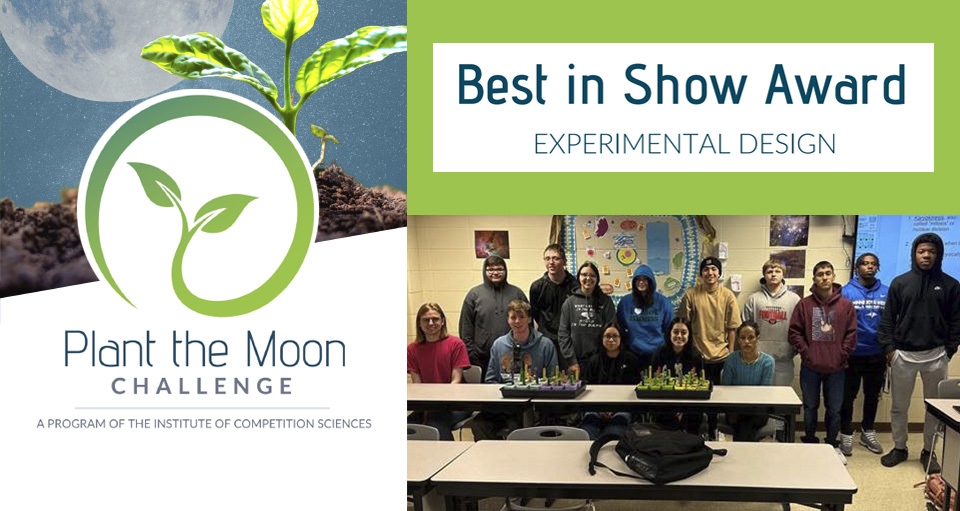In the winter months, Minnesota West entered the Plant the Moon Challenge and won an award for "Best Evaluation of Results." This hands-on project focuses on addressing the human need for access to nutritious food that can be grown on the Moon. The Bluejay team conducted an experiment and found that Collard Greens (B. oleracea) grew significantly larger in the presence of a nitrogen-rich compound compared to when no nitrogen source was provided.
Heidi Tarus, Biology Instructor on the Minnesota West Worthington Campus, was back at it again entering the Spring “Principles of Biology I” Class Bluejay team. The team decided to plant Cherry Belle radishes (Raphanus sativus) because they are container friendly, have a fast germination time, and retain their taste quality for a long time after harvest to prevent food waste. The nutritional value of Cherry Belle radish bulbs is high.
The challenge consisted of 4 parts: Research, Design, Plant & Monitor, and Analyze & Present. The Spring Minnesota West Bluejay team received the Best in Show Award for "Experimental Design". The team, competing at the undergraduate/professional level, consisted of Minnesota West Students: Selam Alemayehu, Julian Bennett, Brandon Berghorst, Leidy Chavez Martin, Devaughn Demus, Taya Denroche, Irma Hernandez, Antonio Heser-Leiva, Christian Lopez, Dylan Markus, Arlene Martinez Cambara, Irving Mendez, Emmot Nathan, Aaliyah Petersen, Taylor Pronto, Deante Porter, Lolita Ramirez Velasquez, Omar Robles, Simon Spittle, Paul Troe, Vant Tucker, Du'Vaughn Williams; and advised by Heidi Tarus and Chemistry Instructor, Dr. Tyler Wadzinski.
In their lunar samples, the Bluejay team's study focuses on the best source of nitrogen that will allow plants to grow while reducing the amount of payload required on a spacecraft. The nitrogen sources tested (independent variable) were calcium nitrate tetrahydrate (Ca(NO3)2·4H2O), ammonium nitrate (NH4NO3), and urea (CO(NH2)2). The three nitrogen sources have different molar masses and nitrogen percent compositions.
The larger team of twenty-two students formed eight sub-teams that contained one to three students per team. Each sub-team was responsible for one pot per treatment. Day 0 started on February 16, 2023. There were 8 weeks of a growth period, and the surface area was collected during the final week on Tuesday, April 4, 2023, with the final day 49 on April 6. Plant height was measured each week and the data was analyzed using a linear regression model to show plant height growth over the grow period.
The main driving question for this project is to discover the trade-off between limiting the mass of nitrogen fertilizers brought to the moon while producing the highest yield of nutrient-rich crops needed to feed individuals living on the moon.
The Bluejay team hypothesized that (1) the nitrogen source will not influence the germination (primordial leaf emergence) rate of the R. sativus plants, (2) the R. sativus plants grown in pots containing a nitrogen source will produce a higher leaf height growth rate, a larger leaf surface area, and the largest bulb compared to the control group. (3) Out of the three nitrogen sources being tested, ammonium nitrate (NH4NO3) will produce the highest leaf height growth rate, the largest leaf surface area, and the largest bulbs.
Data from the experiment supported the first hypothesis. There was no significant difference between the treatment groups and the primordial leaf germination rate. Data from the experiment rejected the second and third hypotheses.
Although radish bulbs did not develop, based on the data the team recommends the use of urea as a nitrogen source when growing R. sativus as urea is the most weight-efficient nitrogen source tested in this experiment.
Dr. Rafael Loureiro, a Science Advisor Board member, provided feedback on the final report. Dr. Rafael Loureiro said, "The experimental design is well-planned and executed. The paper presents a clear and concise hypothesis and independent and dependent variables, allowing for a clear understanding of the study's objectives and design. Using the LeafByte App to measure leaf surface area is innovative and provides a more precise measurement than visual estimation."
The Plant the Moon Challenge and the Plant the Mars Challenge is open to all grade levels from elementary to high education and is an international event. This year the challenge had teams participate from 24 U.S. states, Canada, and India.
The instructors said they enjoyed offering the opportunity to Minnesota West students to participate in scientific research and discover what other teams around the world experimented on.

Initial plant growth set-up on February 16, 2023







